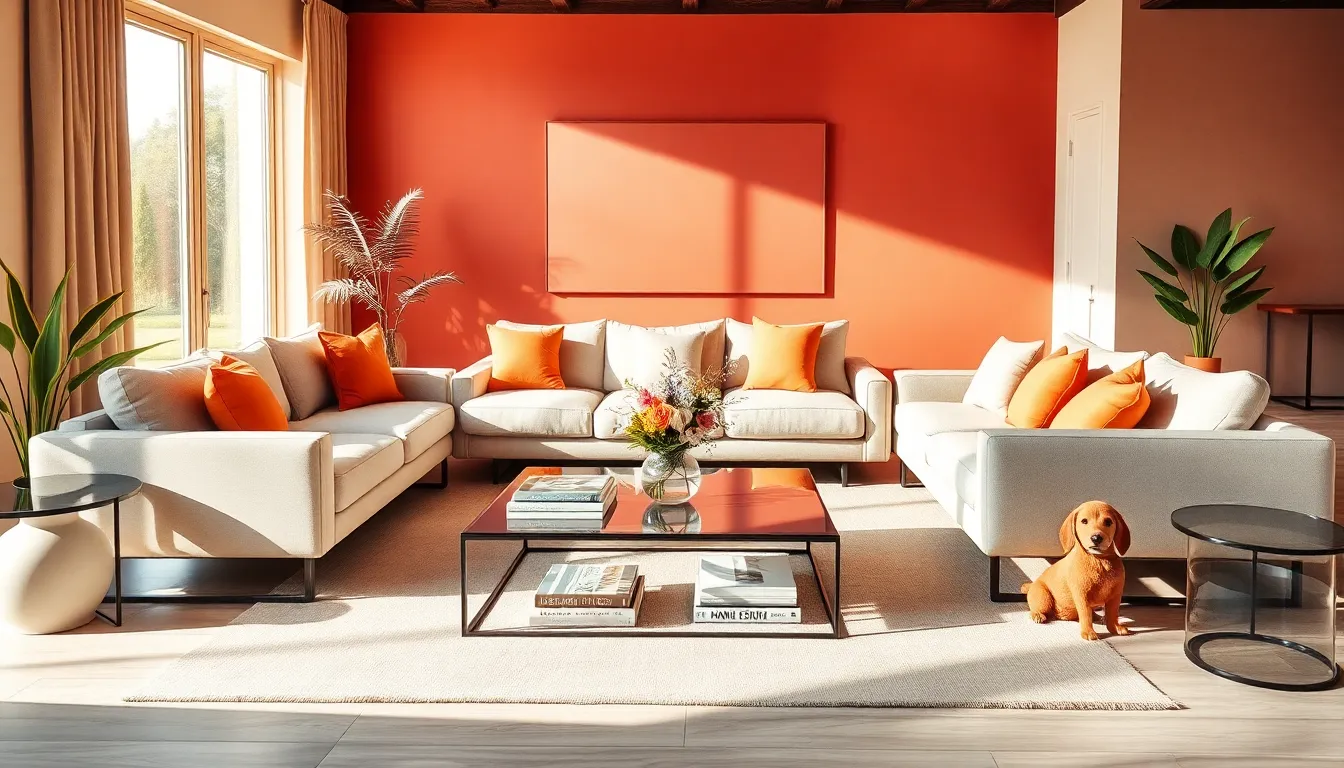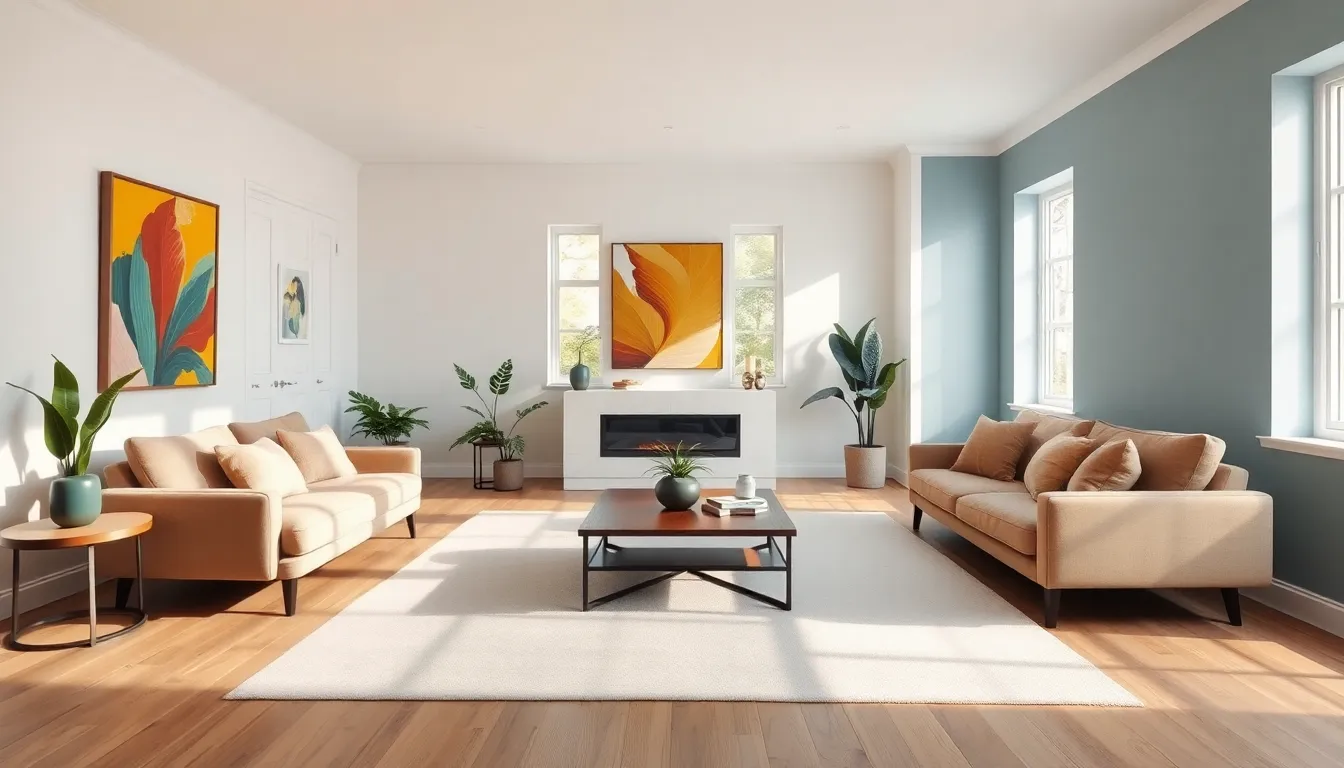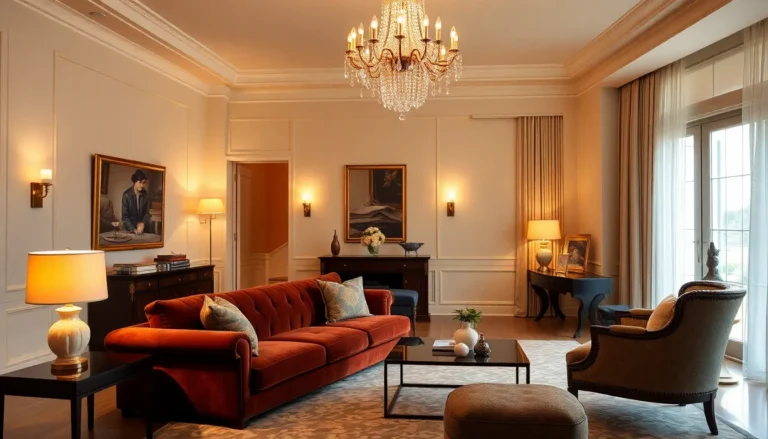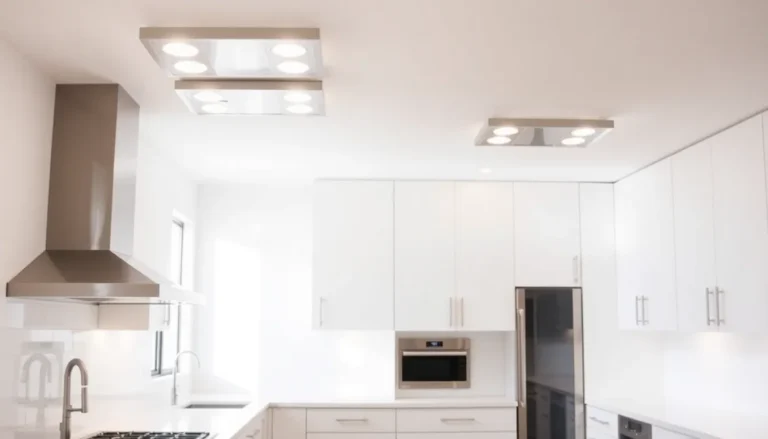Choosing the perfect wall color for a living room can feel like trying to find a needle in a haystack, with so many options that it might just make one want to throw their paintbrush out the window. But fear not. It’s not just about aesthetics: the right color has the power to impact mood and create a welcoming atmosphere. Whether your style leans towards vibrant reds that energize or calming blues that soothe, this guide will help you navigate the vibrant world of wall colors. Ready to immerse? Let’s paint the town, and your living room.
Table of Contents
ToggleUnderstanding Color Psychology

Color psychology is fascinating, influencing emotions, behavior, and even productivity. For instance, warm colors like reds and yellows can spark energy and enthusiasm, making them ideal for social spaces that encourage interaction. On the flip side, cooler shades like greens and blues are known for their calming effects, promoting relaxation and tranquility. When selecting a color, consider the emotions you wish to evoke in your living room. Do you want to create an inviting space for gatherings, or a serene retreat for winding down? It’s real life science in action, folks.
Popular Color Choices For Living Rooms
Diving into popular color choices requires a stroll through the rainbow, with specific hues rising to the top for living rooms. Neutral tones, think grays, beige, and off-whites, remain timeless classics, offering versatility and elegance. Then there’s navy blue, a sophisticated option that provides depth without feeling overwhelming. Earthy tones like terracotta and olive green are gaining traction too, emphasizing comfort and nature. Want a lively twist? Consider shades like coral or mustard yellow for accent walls. These colors not only brighten the space but also create an inviting atmosphere.
Creating A Color Palette
Once the primary color is decided, the next step involves curating a cohesive color palette. This means selecting complementary and contrasting shades that bring harmony to the space. A classic rule of thumb is the 60-30-10 rule: 60% of the space in a dominant color, 30% in a secondary hue, and 10% for accents. For a warm, inviting palette, combine a soft beige with terracotta accents and warm gold decor. Alternatively, for a cooler palette, pair light gray with pastel blue and white furnishings. This strategic layering helps create depth and interest, allowing personalities to shine even through colors.
Choosing The Right Shade For Your Space
Choosing the right shade extends beyond preference. Lighting plays a pivotal role. Rooms with ample natural light tend to benefit from bolder shades, while darker spaces may call for lighter hues to maximize brightness. Don’t forget to consider the room’s size, lighter colors can make smaller rooms feel larger and more airy, whereas deeper shades add warmth to expansive spaces. Also, testing samples on your walls before deciding can alleviate any paint regret later. Observation in different lighting conditions will reveal how color changes throughout the day, what appears refreshing in daylight may feel moody at night.
Tips For Painting And Application Techniques
Now, onto the fun part: painting. Prepare the walls by ensuring they are clean and smooth for a flawless finish. When applying paint, consider investing in quality brushes and rollers that match the paint type. For smoother applications, use a primer to even out tones and enhance color richness. Techniques like cutting in around edges first and using long, even strokes for the main panels can prevent roller marks and streaks. And don’t forget to tape off areas where you want clean lines, after all, who doesn’t love those sharp edges? Finally, patience is key: allow each coat to dry thoroughly before adding another.
Maintaining Your Wall Colors Over Time
As walls endure wear and tear, maintaining their fresh appearance becomes essential. Dust and dirt can dull colors, especially in high-traffic areas. A gentle wash with a mild soap and water solution can work wonders: it’s practically a spa day for your walls. Also, consider using durable paint options that are resistant to scuffs, ideal for family homes with kids and pets. Keep an eye out for any fading due to sunlight exposure: UV-protective window treatments can help guard against this. Regular touch-ups can also restore areas that may have been scuffed or marked. Treating your walls with care will keep them looking vibrant and inviting.




